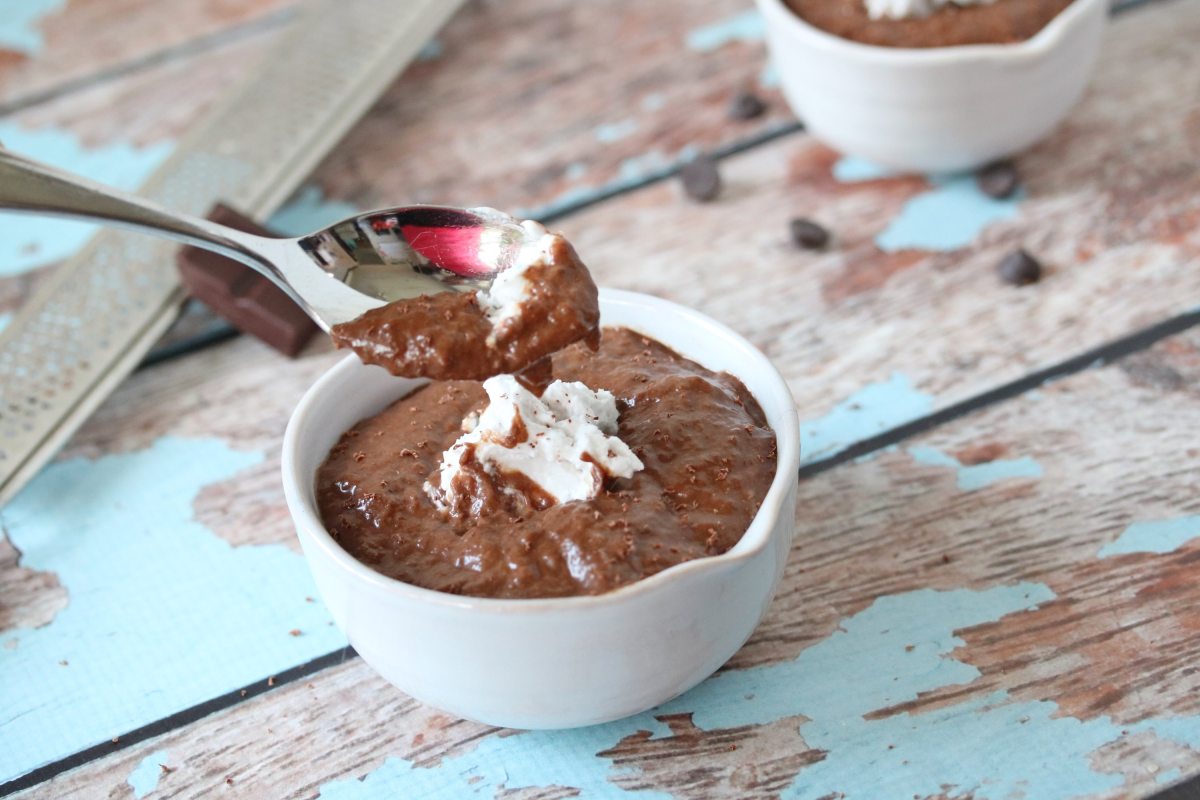Dive into a world of creamy, dreamy desserts without the dairy or soy! This guide unveils the secrets to crafting perfect puddings, exploring a spectrum of plant-based milks, innovative thickeners, and exciting flavor combinations. Imagine luscious coconut mango pudding, a vibrant swirl of spices, or a rich chocolate delight – all completely free from dairy and soy, and bursting with flavor.
We’ll journey through various techniques, from creating a robust base to mastering the art of achieving the ideal pudding consistency, whether you prefer a velvety smooth texture or a firmer, more structured delight. Learn to navigate different dietary needs, exploring substitutions for potential allergens and adapting recipes for vegan, gluten-free, and refined sugar-free lifestyles. Prepare to elevate your dessert game with this comprehensive exploration of dairy-free and soy-free pudding perfection.
Dairy-Free and Soy-Free Pudding Base Options

Creating a luscious, creamy pudding without dairy or soy requires careful consideration of the base and thickener. The right combination will yield a pudding with the desired texture and flavor profile, free from common allergens. This section explores various milk alternatives and thickening methods to achieve dairy-free and soy-free pudding perfection.
Dairy-Free Milk Alternatives for Pudding
The choice of milk alternative significantly impacts the final pudding’s texture and flavor. Each option offers unique characteristics that should be considered when crafting your recipe.
- Almond Milk: Almond milk lends a subtly sweet and nutty flavor to puddings. Unsweetened varieties are preferable for better flavor control. However, almond milk can sometimes result in a slightly thinner pudding compared to other options, requiring a greater amount of thickener. The texture can be slightly watery unless properly thickened.
- Oat Milk: Oat milk provides a creamy texture and a mildly sweet, slightly oaty flavor. Its naturally thicker consistency makes it a good choice for pudding, often requiring less thickener than almond milk. The resulting pudding tends to be quite smooth and rich.
- Coconut Milk (Full-Fat): Full-fat coconut milk delivers a rich, creamy texture and a distinct coconut flavor. This option is ideal for puddings where a strong coconut flavor is desired. However, the intense coconut taste may not be suitable for all recipes. The high fat content contributes to a very thick and luxurious pudding.
Thickener Recipe for Dairy-Free and Soy-Free Puddings
This recipe utilizes tapioca starch, a versatile and reliable thickener for dairy-free and soy-free puddings. Tapioca starch offers a neutral flavor and creates a smooth, creamy texture.
To make a slurry: Whisk together 2 tablespoons of tapioca starch with 4 tablespoons of cold water until completely smooth and free of lumps.
This slurry is then incorporated into the heated milk base, ensuring a lump-free, perfectly thickened pudding. The amount of tapioca starch may need slight adjustment depending on the type of milk used and desired thickness.
Three Pudding Base Variations
Three variations are presented below, each utilizing a different thickener to highlight their unique properties and the resulting pudding characteristics.
- Tapioca Starch Pudding Base: This base utilizes the tapioca starch slurry recipe above. It yields a smooth, creamy pudding with a neutral flavor, allowing the other ingredients to shine. Advantage: Neutral flavor, smooth texture. Disadvantage: Requires precise measurement of starch to achieve desired thickness.
- Arrowroot Powder Pudding Base: Arrowroot powder, similar to tapioca starch, provides a clear and smooth thickening effect. It is slightly less potent than tapioca starch, potentially requiring a slightly larger quantity for the same level of thickening. Advantage: Clear texture, good for lighter-colored puddings. Disadvantage: May require more experimentation to achieve desired consistency.
- Chia Seed Pudding Base: Chia seeds, when soaked in liquid, form a gel-like consistency, naturally thickening the pudding. This method requires a longer preparation time as the chia seeds need to absorb the liquid. Advantage: Requires no additional thickener, naturally rich in fiber and nutrients. Disadvantage: Longer preparation time, potential for a slightly gritty texture if not properly blended.
Flavor Profiles and Ingredient Combinations
Unlocking the world of dairy-free and soy-free pudding opens a vibrant spectrum of flavor possibilities, far beyond the familiar vanilla and chocolate. By thoughtfully combining ingredients and employing aromatic spices and extracts, you can craft puddings that are both uniquely delicious and surprisingly complex. This section explores exciting flavor combinations, the power of spices and extracts, and provides recipes showcasing the versatility of fruits in creating exceptional dairy-free and soy-free pudding experiences.
The key to success lies in balancing sweetness, acidity, and subtle notes of spice or extract to create a harmonious and memorable flavor profile. Experimentation is encouraged, as personal preferences greatly influence the final outcome. The following examples provide a starting point for your culinary adventures.
Unique Flavor Combinations for Dairy-Free and Soy-Free Pudding
These five unique flavor combinations offer a departure from traditional pudding flavors, showcasing the versatility of dairy-free and soy-free bases. Each combination balances sweetness, tang, and subtle nuances to create a delightful sensory experience.
- Coconut Mango Lassi Pudding: The creamy sweetness of coconut milk blends beautifully with the tropical tang of mango puree, creating a refreshing and subtly spiced pudding. A touch of cardamom adds warmth and depth.
- Lavender Honey Pudding: The delicate floral notes of lavender extract intertwine with the rich sweetness of honey, creating a sophisticated and subtly aromatic pudding. A hint of lemon zest adds brightness.
- Spiced Pumpkin Pie Pudding: The warmth of pumpkin puree is enhanced by classic pie spices – cinnamon, ginger, nutmeg, and cloves – creating a comforting and deeply flavorful pudding. A touch of maple syrup adds sweetness.
- Raspberry Rose Pudding: The tartness of raspberry puree is beautifully balanced by the delicate floral aroma of rosewater, creating an elegant and surprisingly refreshing pudding. A touch of vanilla bean paste adds subtle sweetness.
- Black Sesame Ginger Pudding: The nutty and slightly bitter notes of black sesame paste are beautifully complemented by the vibrant zing of ginger, creating a unique and unexpectedly delicious pudding. A touch of brown sugar balances the flavors.
Enhancing Flavor with Spices and Extracts
Spices and extracts are instrumental in transforming a simple dairy-free and soy-free pudding base into a complex and flavorful dessert. They add depth, warmth, and subtle nuances that elevate the overall taste experience.
For example, a pinch of cinnamon can add warmth to a pumpkin pudding, while a dash of cardamom can create an exotic twist in a mango pudding. Vanilla extract provides a classic touch, while extracts like almond, peppermint, or orange can introduce unique and unexpected flavor profiles. The key is to use spices and extracts judiciously, allowing their subtle notes to enhance, not overpower, the other flavors.
Fruit-Infused Dairy-Free and Soy-Free Pudding Recipes
Fruits bring vibrant color, juicy texture, and refreshing sweetness to dairy-free and soy-free puddings. The following recipes demonstrate how different fruits can be incorporated to create unique and delicious desserts.
- Strawberry Basil Pudding: Puree fresh strawberries until smooth. Gently fold in chopped fresh basil leaves. Combine with your chosen dairy-free and soy-free pudding base. The bright acidity of the strawberries is beautifully balanced by the slightly peppery notes of the basil. Imagine the vibrant red of the strawberries contrasting with the deep green flecks of basil throughout the creamy white pudding.
- Blueberry Lemon Pudding: Gently simmer fresh blueberries with a squeeze of lemon juice until they soften and release their juices. Strain the mixture to remove seeds, if desired. Incorporate the blueberry-lemon mixture into your dairy-free and soy-free pudding base. The tartness of the lemon brightens the sweetness of the blueberries, creating a refreshing and vibrant pudding. Picture the deep purple hue of the blueberries, punctuated by the bright yellow tones from the lemon, all nestled within the smooth, creamy base.
- Peach Almond Pudding: Dice ripe peaches and gently sauté them with a touch of almond extract until they soften. Blend the peaches until smooth, then incorporate into your dairy-free and soy-free pudding base. The sweetness of the peaches pairs perfectly with the nutty aroma of the almond, creating a comforting and sophisticated pudding. Envision the soft, golden-hued peaches interwoven with the creamy texture of the pudding, offering a delightful contrast in both color and consistency.
Unlocking the potential of dairy-free and soy-free pudding is a culinary adventure that rewards creativity and delicious results. From the simple elegance of a perfectly smooth texture to the vibrant explosion of unique flavor combinations, this guide empowers you to create desserts that are both satisfying and inclusive. With a range of techniques, adaptable recipes, and stunning presentation ideas, you’ll be crafting delectable puddings that delight the senses and impress everyone at your table. So, gather your ingredients and embark on this delicious journey – the world of dairy-free and soy-free pudding perfection awaits!
Frequently Asked Questions
Can I use cornstarch as a thickener?
Yes, cornstarch is a common and effective thickener for dairy-free puddings. However, be mindful that it can create a slightly different texture compared to other thickeners.
How long can I store dairy-free pudding?
Most dairy-free puddings will last 3-5 days in the refrigerator when stored in an airtight container.
What are some good dairy-free chocolate alternatives?
High-quality dark chocolate (check labels for dairy), carob powder, or cocoa powder are all excellent options for creating rich chocolate pudding.
Can I freeze dairy-free pudding?
While freezing is possible, the texture might change slightly upon thawing. It’s best to enjoy it fresh.


